EAFO study: charging infrastructure in the EU
A new analysis by the European Alternative Fuels Observatory (EAFO) provides interesting insights into the status of charging infrastructure development in Europe. The study also shows that a major effort is still needed to reach the European Green Deal’s milestone of one million public charging points by 2025.
The data now published by the EAFO goes up to the end of 2020 and shows just under 287,000 public charging points in Europe. This corresponds to a fourfold increase compared to 2015 (67,000 charging points), although the distribution of charging points is far from even: Five of the 32 countries surveyed are home to 73 per cent of all public charging points. The Netherlands leads the way with 66,400 public charging points, followed by France (just over 46,000), Germany (around 44,500), the UK (around 33,300) and Norway (just over 18,500).
In its statistics, the EAFO differentiates between public charging points with 22 kW and less, (i.e. AC devices, and charging points with more than 22 kW), and DC devices. In the top five countries, the share of charging points with 22 kW and less was highest in the Netherlands with 96 per cent. In France, AC charging points accounted for around 91 per cent of all public charging points, in Germany 83 per cent, in the UK 81 per cent and in Norway 72 per cent. However, according to the study, there are also some EU countries where charging points of 22 kW and above dominate, such as Latvia, where they account for 75 per cent of public charging points, or Lithuania (56 per cent) and the Czech Republic (51 per cent).
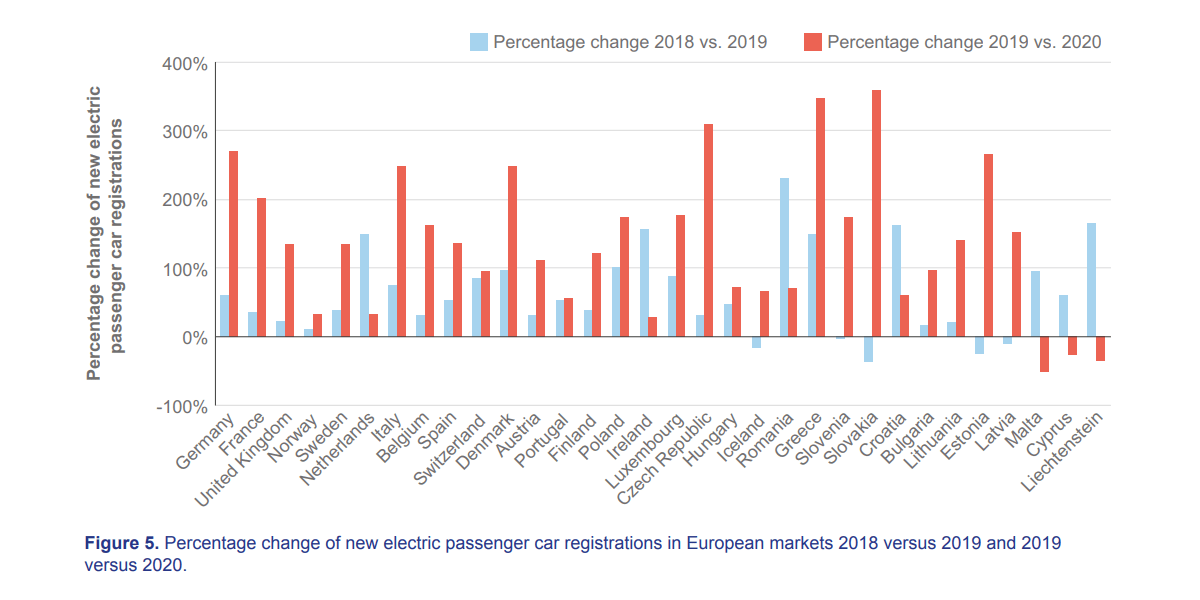
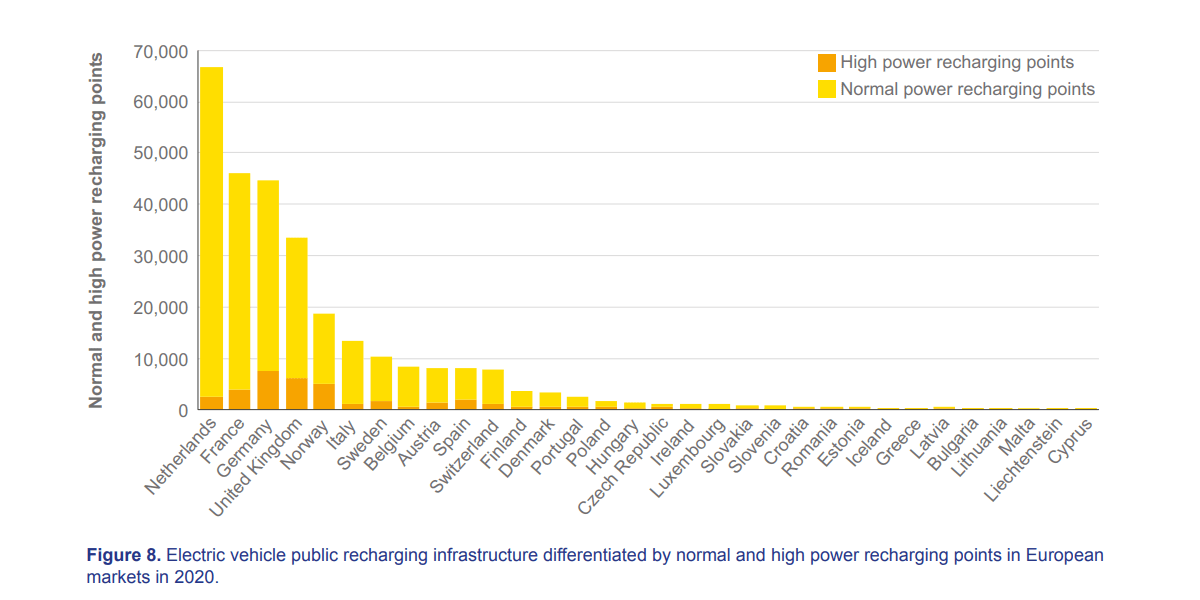
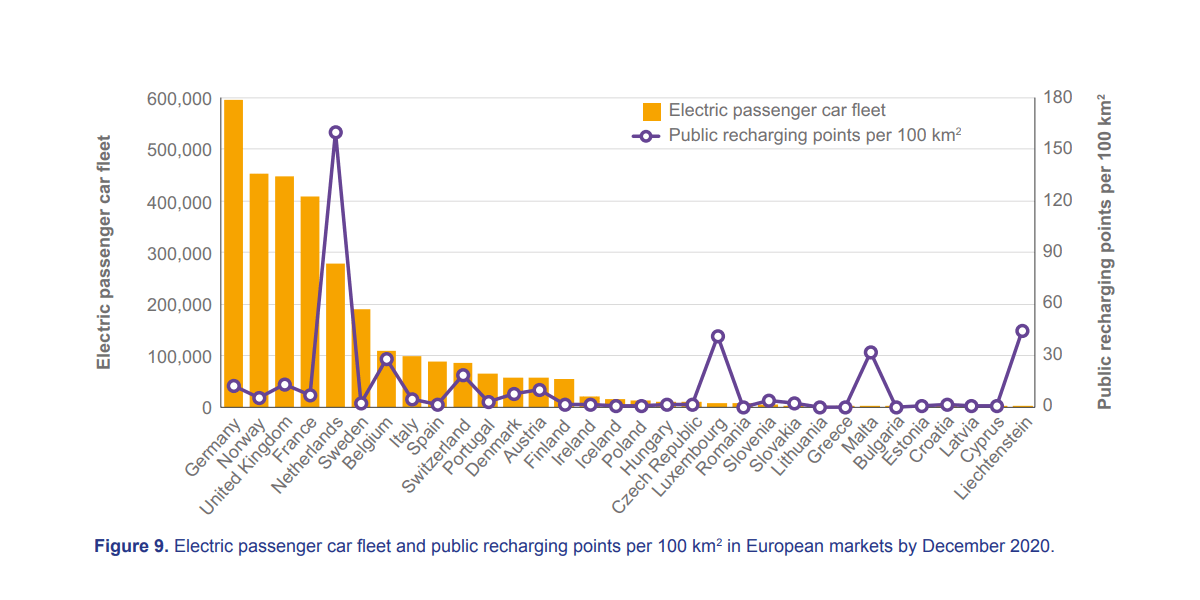
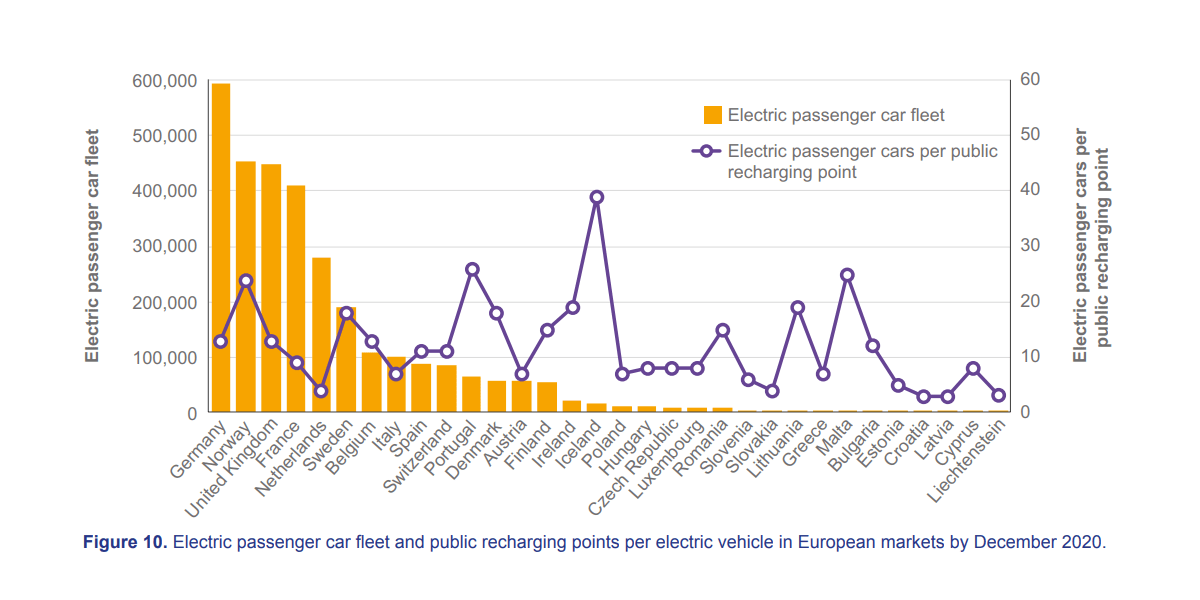
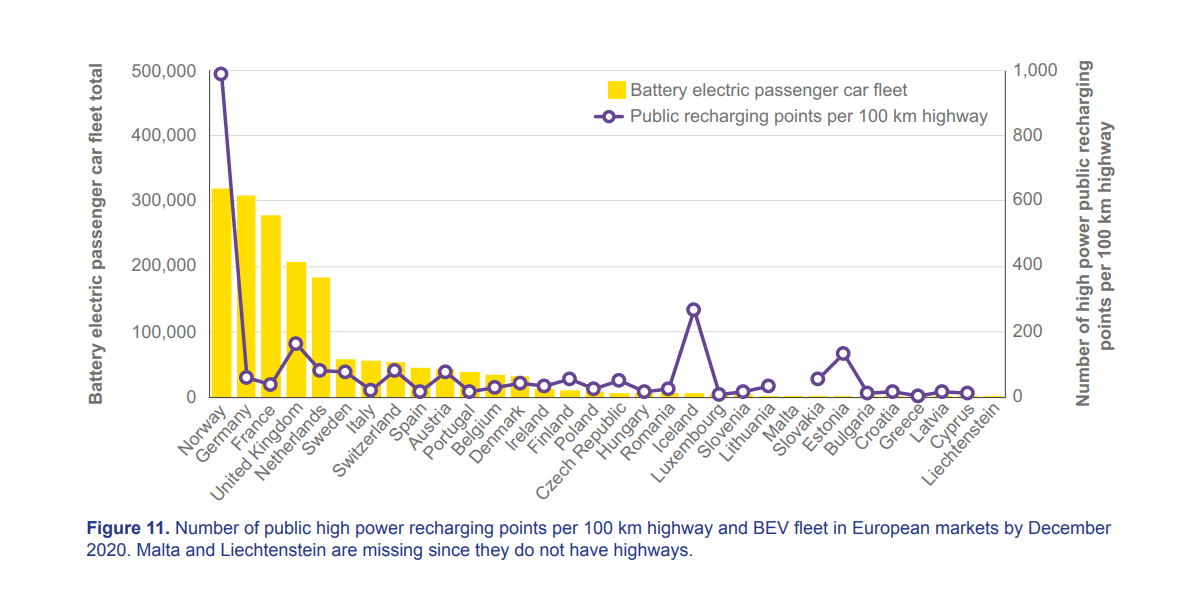
Looking only at the 27 EU Member States, 80 per cent of all public charging points, which number 226,000 charging points, are located in the Netherlands, France, Germany, Italy and Sweden. The ratio of AC to DC devices in the EU is 89 to 11 per cent, with public DC chargers mainly found in Germany, France, the Netherlands, Spain and Sweden. This quintet accounts for 69 per cent of all DC charging points within the EU.
The study underlines that the EU still has a lot of work to do to reach the target of one million public charging points by 2025, as set out in the European Green Deal. The current state of expansion is only 23 per cent of this target.
For those who want to go even deeper into the analysis: The study of course also puts the number of charging points in the individual countries in relation to the country’s surface area and the local electric car population. On average, the EAFO calculates 13 public charging points per 100 km² for the whole of Europe (i.e. the 32 countries, including Great Britain and the EFTA countries Iceland, Liechtenstein, Norway and Switzerland). Here, the distribution varies greatly from country to country. Germany is relatively close to the average with 12 charging points per 100 km². The Netherlands has by far the best value (160 per 100 km²), followed by Liechtenstein and Luxembourg (44 and 41 per 100 km²). Bulgaria, Croatia, Cyprus, Estonia, Greece, Latvia, Lithuania and Slovakia have less than two charging points per 100 km².
The study also cites the number of electric vehicles per charging point as a further indicator: Iceland has the lowest ratio with 39 electric vehicles per public charging point, followed by Portugal (26:1), Malta (25:1) and Norway (24:1). Countries like France, Spain and Switzerland range from nine to eleven electric cars per public charging point. At the other end of the continuum are Croatia, Latvia and Liechtenstein with a ratio of 3:1.
Of course, the electric vehicle stock in absolute numbers plays a role here. The EAFO lists the following statistics for the passenger car market: The bulk of electric cars (BEVs and PHEVs) on European roads at the turn of the year were concentrated in Germany (almost 600,000), Norway (just over 450,000), the UK (just under 450,000), France (almost 410,000) and the Netherlands (just under 280,000). This quintet accounts for 70 per cent of all electric cars. In eleven of the 32 countries – i.e. in one-third of the countries surveyed – the number of electric cars is less than 5,000 (Liechtenstein, Slovenia, Bulgaria, Croatia, Cyprus, Estonia, Greece, Latvia, Lithuania, Malta and Slovakia). While in 24 of the 32 markets the share of BEVs on the road exceeds that of PHEVs, the reverse is also true in some countries, such as Belgium, Cyprus, Finland, Greece, Iceland, Luxembourg, Sweden and the UK.
Further analysis can be found in the study linked below. This was developed for the European Commission within the framework of the EAFO 2.0 contract and, in addition to the stocktaking, also contains recommendations for future policy-making at the EU level.
Reporting by Cora Werwitzke



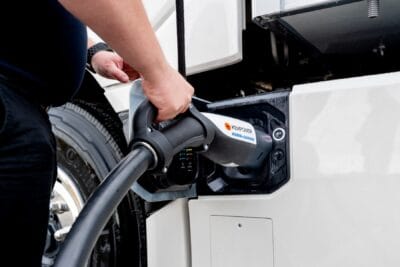

0 Comments